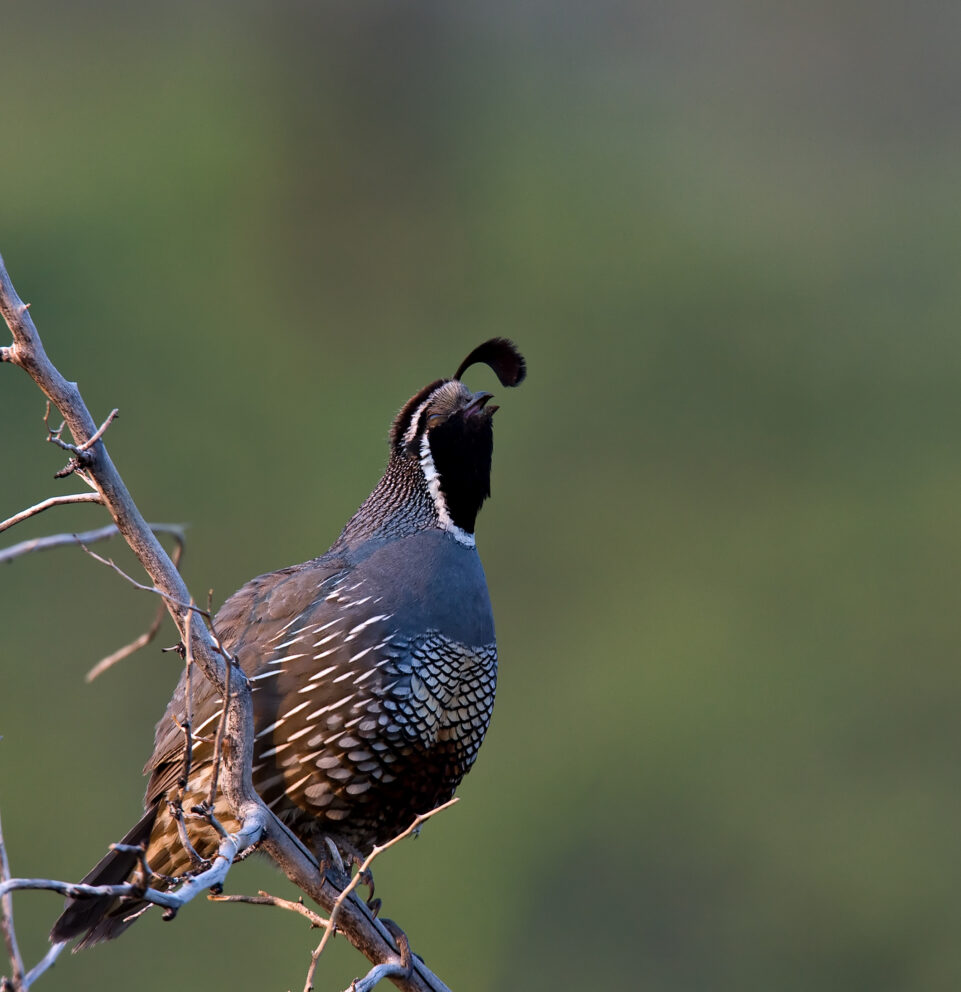- SCIENTIFIC NAME
- Callipepla californica
- CLASSIFICATION
- Bird
- LIFE SPAN
- 1-4 Years
- SIZE
- 9.4-10.6” | 0.6-0.5lbs
- STATE CONSERVATION STATUS
-
- State Protected
- FEDERAL CONSERVATION STATUS
- Least Concern
- GAME STATUS
- Game
- GAME TYPE
- Upland Game
- Washoe
- Humboldt
- Pershing
- Churchill
- Mineral
- Lyon
- Douglas
- Carson City
- Storey
- Elko
- Lander
- Eureka
- White Pine
- Esmeralda
- Nye
- Lincoln
- Clark
Habitat & Range
California Quail can be found in a variety of habitats including our backyards. They are often found in scrub landscapes, open woodlands and in valleys where water is present.
- Agricultural Lands
- Cold desert shrubland and sagebrush
- Developed Landscapes
Threats
- Habitat Loss
Natural History
California Quail can be found foraging on the ground throughout the morning and evening. They eat a variety of food but the bulk of their diet is made up of seeds. They will also eat plant material like leaves, flowers and catkins. They can also eat small invertebrates like caterpillars and snails. California Quail typically nest on the ground and can have clutches that range from 12 to 16 eggs. After a 22 to 23 day incubation period, young quail will hatch and can be found following their parents who provide protection for the first three to four weeks of life.












